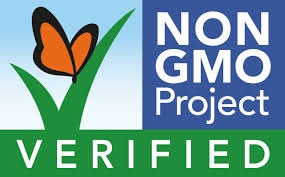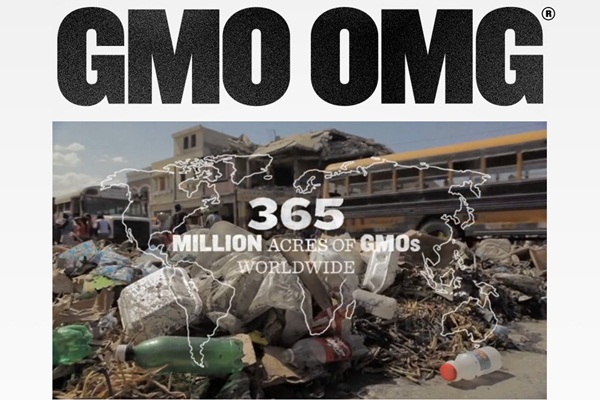In October I diligently researched to bring you a post on “Foods to Buy Organic: Beyond the Dirty Dozen.” As many of you may have suspected, this list included GMOs or foods with the potential to be genetically modified.

Most of the items pictured above aren’t rampant in the produce department, yet. Don’t get too comfortable though, as genetically modified strains are slowly getting introduced into our whole foods. And when it comes to packaged foods, GMOs are hot.
As of this year, approximately 91% of soybeans, 85% of corn, and 88% of cotton (this includes cottonseed oil, which is used substantially in the food industry) produced in the United States are genetically modified. Other estimates state that roughly 90 percent of our canola supplies (canola is not pictured above since we don’t typically purchase the whole plant in stores, but it is a key ingredient in processed foods) are genetically modified and that these plants may be spreading well beyond cultivation. A study in North Dakota showed that 86 percent of wild canola plants were GMOs.
So what does this have to do with your dairy alternatives?
We have this illusion that our natural food industry is immune to GMOs. That those easy to read ingredients on a milk alternative package mean we are only consuming purity. But this certainly isn’t true. Though all of their store staff isn’t necessarily up on this, even Whole Foods corporate has had to admit that GMOs could be in some of their products. They have pledged to be GMO “transparent” and hopefully GMO-free by 2018, but that could be a an unsurmountable feat.
Some Dairy Alternatives Can and Do Contain GMOs
 I’ve been working with So Delicious this year, and was actually a bit puzzled at first by their commitment to non-GMO verification. Beyond their line of soy-based ice creams, I couldn’t imagine what other products would even have concern for GMOs.
I’ve been working with So Delicious this year, and was actually a bit puzzled at first by their commitment to non-GMO verification. Beyond their line of soy-based ice creams, I couldn’t imagine what other products would even have concern for GMOs.
Soy is a more direct concern with many dairy alternatives. GMO soy could linger as non-organic whole soy, soy protein isolate, soy lecithin, or other more elusive forms in dairy-free milk, ice cream, creamer, yogurt, or other alternatives. Using organic and non-GMO verified soy is one route. Another is to switch to products with alternate bases, such as coconut or almond.
But as consumers, we can’t count on rice, almond, coconut or other alternatives to be free of GMOs, unless they are non-GMO verified. They might contain genetically modified canola or cottonseed oil for richness, or even “natural” flavors, sweeteners, emulsifiers or other “wholesome” additives derived from GMO ingredients.
This information moved my label reading to another level and for the first time ever, gave me reason to consider brand loyalty. I have new appreciation for companies who take the time, money and effort (certifications are not cheap nor easy!) to test, thoroughly source and obtain non-GMO verification, regardless of the type of product they produce. New genetically modified strains are being developed as I type, and as consumers, it is difficult to know where GMOs may pop up next.
Other Sneaky Sources of GMOs
Beyond dairy alternatives, I was surprised to learn of the following:
- Dried fruits may be sweetened with high fructose corn syrup and coated with oils, both of which could be GMO ingredients.
- Squash is a growing concern for GMOs year round. There are now several strains of zucchini and yellow summer squash on the market (see image above) and even in our produce bins. But the concern doesn’t stop with those varieties. Those cute little patty pan squashes can be become contaminated by pollen drift, as can hearty winter acorn and delicate squashes.
- Chewing gum ingredients are easily overlooked – I’m guilty myself. But most brands contain GM soy and corn in the form of more obscure ingredients like maltodextrin, xylitol and flavors.
- Baking ingredients like self-rising flour and baking powder almost sound like single ingredients, but genetically modified cornstarch can be common in either.
- Fruit juice isn’t as pure as it once was. Many varieties are sweetened with sugar (which can be derived from GM sugar beets) or genetically modified high fructose corn syrup. Yes, even plain old “sugar” can be produced from GMOs.
For more information, check out GMO OMG, Foods to Buy Organic, and keep an eye out for that non-GMO Project verification, even on dairy alternatives.


9 Comments
Pingback: Nutritious Creamy Vegan Pasta Primavera Recipe - Go Dairy Free
Pingback: Dairy-Free Benefits: The Top 10 Reasons People Go Dairy Free
Pingback: Holistica Integrative Care » Blog Archive Are there GMOs in your Dairy Alternatives? » Holistica Integrative Care
Thank you for this great blog post. I’m glad to get the scoop!
Thanks Ginny!
It’s a little horrifying to think how much our food supply has been scientifically altered. And you’re right–we so rarely think about all the little “added” ingredients to things, and that they could be GMO!
I know. We are finally to a place where ingredient statements are looking more legible, but now even the “natural ingredients” may have secrets!
Alisa, this is such an important topic and useful post. Thanks for doing the research, I’m going to share with my readers.
Thanks Dreena!